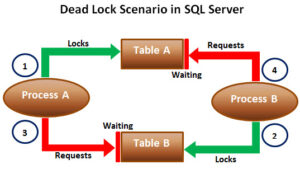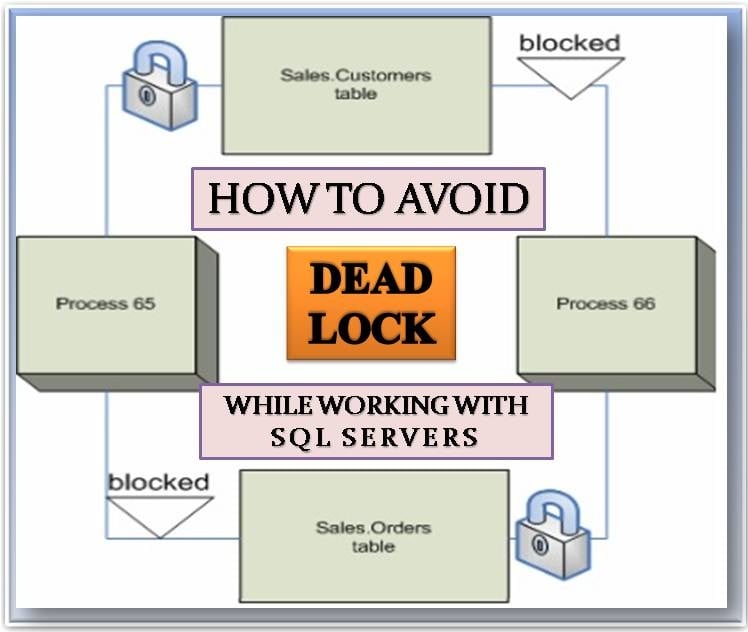The article suggests important tips to avoid Deadlocks in SQL Servers
Although SQL Server has witnessed huge evolution in past couple of years, users still regularly face the situation of deadlocks. Ideally, a database server should be able to retrieve multiple requests but it often results in blocks. The conflicts where one process awaits the release of another resource are called blocks. And then there are Deadlocks.
Imagine a situation where one person is asking the second to release a resource and the second is waiting for the first to release. As a result, both are stuck in a deadlock situation. None of the process can continue as both are locked and require the other one to release the resource or lock.
While working with SQL servers, deadlocks are pretty common and they can hamper the entire process. It’s not possible to avoid deadlocks altogether but one can surely minimize the chance of creating a deadlock.
Deadlock trouble

It should be noted that deadlocks directly affect the performance and may halt the processing of database.
1. Keep the order same
Deadlocks are bound to occur if the resources are not processed in a well defined order. To minimize deadlocks, all the concurrent transactions should access objects in a well defined order. DBAs should design clear set of rules for accessing Database objects. Usually Lock Monitors perform deadlock check and when detected, they select one deadlock victim and roll its transaction back. Thus, all locks get released and previous sessions are allowed to continue the process. Deadlock victims are chosen on the basis of Deadlock priority set by Server or rollback cost.
2. Restriction during Transaction
You can restrict the users to input any sorts of data when the transaction is processing and you may update the data prior to the transaction to avoid deadlocks. Also, try to keep the user interaction to minimum levels because it affects the speed. Ideally, transactions should be short and fast to avoid deadlocks. An application should be designed in a way that it grabs the locks in the least required time and release them as quickly as possible.
3. NOLOCK Hint
When someone runs a query against a table in SQL default isolation level, table gets locked and next queries have to wait for the release. NOLOCK Hint is helpful in such situations as it allows override locking of table and other queries get easy access.
4. Use Bound Connections
If the same application can open two or more connections which can cooperate with each other, then it would not create deadlocks. That’s why it’s advised to use Bound connections.
Deadlocks are not the only hassle you are likely to experience while working on a SQL Server database. In fact incidents of sql corruption are more likely to cause you grief. To avoid a data loss scenario invest in a powerful recovery tool like DataNumen SQL Recovery.
Author Introduction:
Victor Simon is a data recovery expert in DataNumen, Inc., which is the world leader in data recovery technologies, including mdb recovery and sql recovery software products. For more information visit https://www.datanumen.com/
